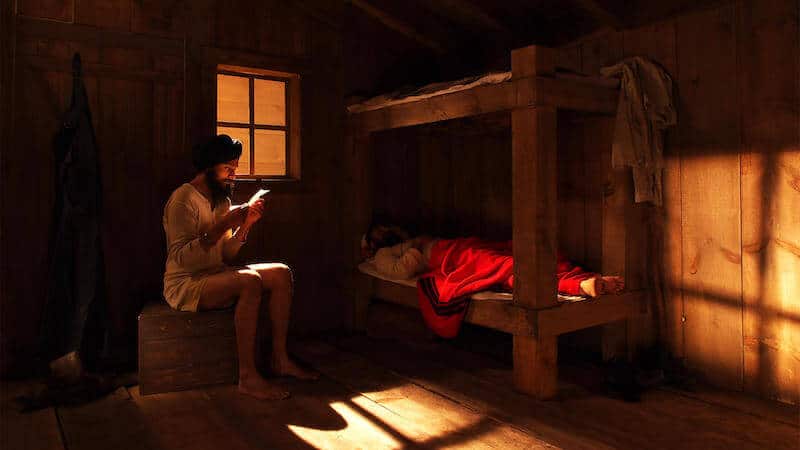Centering Indigenous Art Practices
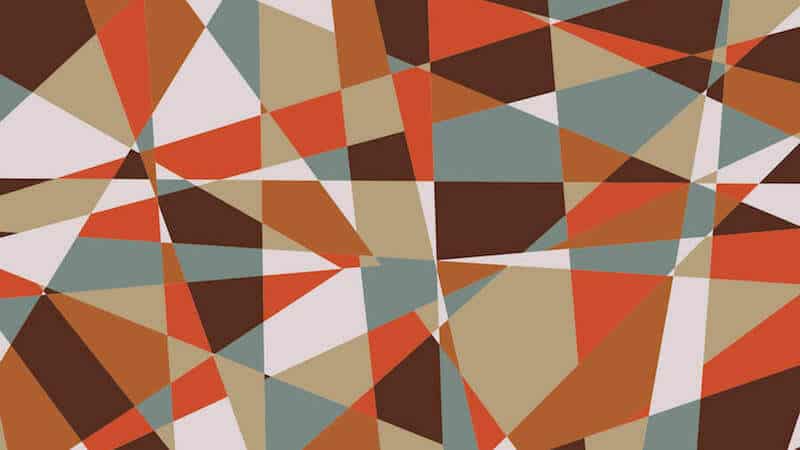
Share Article
Chris Creighton-Kelly and France Trépanier are the co-Directors of Primary Colours/Colours primaires (PC/Cp). They designed, planned and facilitated a Gathering of artists from across Canada. The Gathering took place on September 23-26, 2017 on Lekwungen Territory at the Songhees Wellness Centre, near Victoria, BC.
This conversation has been condensed and edited. The main conversation consists of excerpts from the October 27, 2017 conversation held on WSÁNEĆ territory near Victoria BC.
In May 2019, Chris Creighton-Kelly and France Trépanier were invited to provide commentaries to their 2017 thoughts. These 2019 comments are provided as interwoven and braided thoughts that interrogate and refresh the earlier conversation.
Part 1 – Putting Indigenous Art Practices at the Centre
+++
Chris Creighton-Kelly (CCK): Well, Rungh has offered us a chance to revisit our words from two years ago. That is challenging but could also be revelatory. Are you up for this?
France Trépanier (FT): I am! It gives us a moment to reflect not only on our understanding of the work of Primary Colours/Couleurs primaires, but also to take stock of the changes that have taken place over the past two years. I mean, take a word like reconciliation. It has become clear that our collective understanding of reconciliation implies more complex work over a much longer period of time.
+++
Zool Suleman (ZS): When you were conceptualizing the Primary Colours Gathering, what were you thinking you wanted to do?
France Trépanier (FT): Both Chris and I have been organizing and also attending many events. In the past decade, we've been specifically attentive to decolonizing methodologies and to Indigenous principles of sharing knowledge by how we talk to each other. For me, really my intention was to put in action Indigenous methods and principles of generating new knowledge collectively.
Chris Creighton-Kelly (CCK): We were thinking about the question of the Canadian art system and how it functions. We do both think of it as a system. By that I mean the funding institutions, the venues in which artists show their work, the frames that the art magazines create, the various arts organizations that are artist-run and then those that are run by bureaucrats. All of that and more…the media and the critical discourse, all of that comprises something called an art system.
That art system has a Eurocentric bias because of the way it was created back in the 50s, the 60s and that bias continues up to now. We wanted to re-look at all of that in the 2017 context. For both of us and for many of the people who came to the Gathering, one aspect of that is putting Indigenous practices at the centre. If you are going to understand what the Canadian art system is and therefore what Canada is, you have to start by putting Indigenous arts at the centre.
The second thing is that there are arts practices from all around the world that have come to this territory called Canada and the arts system has put 90% of the emphasis on the ones that come from Europe – that's what has to change.
The fundamental goal of the Gathering was to bring people together – across generations, across racial backgrounds, across regions, across gender fluidities, across the two official languages, across artistic disciplines – to talk about this and to see what new knowledge can be generated that went beyond the "access paradigm" or the "inclusion paradigm". we feel that we are in "the engagement paradigm", that is the idea to bring people together who could really generate new approaches to these conversations.
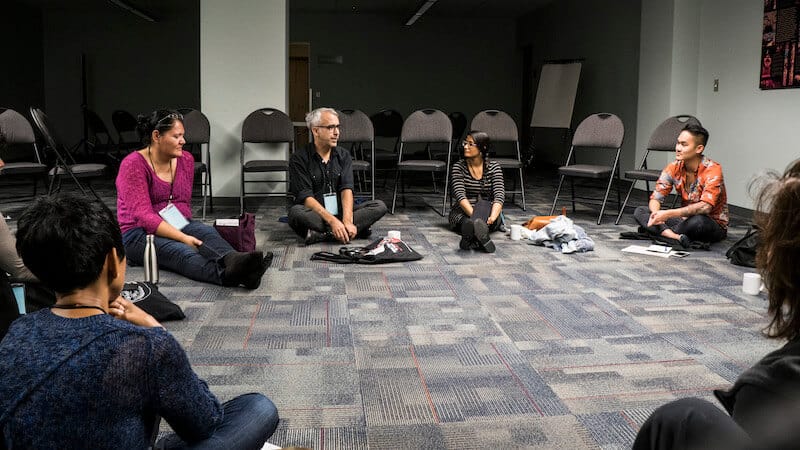
Photo: Kirk Schwartz.
+++
France: At the time of the Lekwungen Gathering, we were discussing the obsolescence of terms like access and inclusion to describe the presence of IBPoC artists and their work in the Canadian art system. You mentioned here that we are in 'the engagement paradigm'. Do you still think that the term is accurate? What about the concept of self-determination that is being used more and more?
Chris: I think you are right that ideas like cultural self-determination, artistic sovereignty have been heard more frequently in the last two years. I think this represents two converging factors. One is a general fatigue with the glacial rate of change and what you often call the pushback. The other is a genuine desire to build new protocols, new governance, new infrastructure, new visions. Increasingly, I hear IBPoC artists say, " …enough of this reforming, let's start anew and do things the way we want!" There are many examples; one that comes to mind is what Tania Willard is doing with the Bush Gallery.
Still, the problem I see is that we are actually even now part of the 'engagement paradigm' in 2019. But I am not wishing to sound pessimistic here – this engagement is a necessary step. And yes, we are headed for self-determination, especially in the Indigenous art scene.
+++
FT: I think that 2017 was also a very specific moment in Canadian history. It came after the publication of the Truth and Reconciliation Commission calls for action; then Canada 150 – the "celebration" of the 150th anniversary of Canada; the changes at the Canada Council and also the discussions around reconciliation. There is something in the Canadian body politic regarding the arts that was ready, I think, for this conversation.
+++
Chris: You mentioned to me that you thought there was a significant change from 2017 to 2019…that you felt there were many kinds of reactions. What did you mean by that?
France: Things have certainly changed over the past two years. A lot of significant work has been undertaken in different sectors like education, health and justice. Things are lagging in the arts sector. During the Canada 150 and reconciliation projects, a number of arts organizations and cultural institutions tried to address issues of Indigeneity, racial equity and representation. Sometimes the efforts were genuine, sometimes, it felt more like a 'ticking the box' exercise.
In the main, I would say that the changes remain precarious. The 'new' Indigenous positions are generally far from the centre of decision making, far from the centre of power. They have often taken the form of internships, fellowships, mentorships or contract work – not exactly putting Indigenous arts at the centre of the art system!
+++
Part 2 – Knowledge and Funding Partners
ZS: The Conservative government started to push the "Canada 150" celebratory frame and this current Liberal government then took it on. A particular notion of what date counts and what date doesn't count. And what needs to be foregrounded and celebrated and what does not exist. Did you have any issues around accepting the Canada150 funding for your Gathering and if you did accept some of the funding, how did you deal with it?
FT: The first thing I would say is that in looking at the funding for Canada150 – to which we did not apply – well, I would go one step further. I would say even the funding going to "reconciliation" was problematic. Both things remain problematic from my perspective. I sat on a jury for "reconciliation grants", and how can I say this, I was heartbroken to sit on that jury. Heartbroken because here we had Indigenous people working so hard at projects for reconciliation and it was the Indigenous people doing the reconciliation work. Putting themselves out there and I've seen this over and over again. I see it in action how much of the burden of that reconciliation work falls back to Indigenous people which in my mind makes no sense at all.
Then when we come to the Canada150 funding, again it's so problematic. I mean what are we celebrating exactly? 150 years of colonization? Of not respecting treaties? We decided to jump in to counter and challenge this funding model. That's what we did with Primary Colours/Couleurs primaires.
The other aspect of your question about funding was that we were deliberate in our methodology. We did not have a relationship of "funder and client" because we felt that what we were offering, what we were building and the conversation that we were holding space for, were as important to funders as they were to communities. Funders do not have any means to reach and understand communities in the way that we were offering.
I worked in arts policy for a long time, so I know very well how frames have an impact on conversations. We approached funders, not as funders, but as partners. We went to funding bodies and negotiated partnerships because we functioned with the principle of reciprocity, which is one of five Indigenous guiding principles. They were giving us something, to be sure, but we were offering them something important too.
CCK: We were also bringing the knowledge of the people who have been involved and as any IBPoC person knows, that knowledge is imbedded in Indigenous people and people of colour who have come here from around the world. This is such valuable knowledge that the Canadian state really needs. Unfortunately, the Canadian state is mostly run by people from the European tradition that do not understand this knowledge. You have this upside-down reality that the people with the most power have the least knowledge, and this is problematic worldwide – but it is particularly acute in Canada.

Photo: Kirk Schwartz.
+++
France: It is true that IBPoC artists and cultural workers have to constantly straddle two worlds: they are grounded in their own racial/cultural traditions and yet at the same time, they have to navigate the Western framing of art. In other words, they often have to deal with clashing worldviews. How can their intellectual and artistic versatility be better recognized and valued?
Chris: This is a great question. For many years now, IBPoC pundits – and queer or differently abled or feminist commentators – have suggested the experiences and knowledge of the 'other' is made invisible by the powers that be. And yet it is that knowledge that is so crucially needed right now. In the art world, it means constantly creating an increased presence for IBPoC artists – on stages, in media arts, in galleries, online and in the written word.
But fundamentally, along with that presence, there must also be the recognition that this increased visibility – making the invisible visible – means that white or straight or able-bodied or male artists will have to move over. They will actively have to address their own privilege. That is not easy to do!
+++
Part 3 – Territory and Ceremony
ZS: I want to discuss questions about land – about territory, welcoming and ceremony. It was so amazing to see how the beginning of the Gathering worked and its relationship to the Lekwungen people who welcomed us to their land. Tell me about how this came together?
FT: I have been the Aboriginal Curator at Open Space for almost 3 years and I've been living on the land of the WSÁNEĆ people and working on the traditional territory of the Lekwungen people. As Aboriginal Curator, one of my jobs is to nurture relationships with these nations.
In our work, I have to give credit to Margo Kane of the Talking Stick Festival because Margo has done some really important groundwork in this area. She has nurtured solid relationships with cultural knowledge keepers from the Musqueam, Squamish, and Tsleil-Waututh First Nations. I have experienced many times being welcomed to their territories in such a meaningful way that it has transformed my whole experience of being there. It is something that we, both Chris and I, wanted to give to the people we were inviting to the Gathering. We have deep respect for the Songhees First Nation and for the Lekwungen people. We wanted to hold this event on native land. We wanted to follow protocols. The local protocols here are so powerful.
It was a very important aspect for us to ground the work and to make sure that people understood where they were and to understand the protocols of here. To not just understand, but to feel it. To experience it. This Gathering was not about just intellectual knowledge, it was also about the body knowledge, about emotional knowledge. We've been building a relationship with Bradley Dick who conducted a lot of the ceremonial aspects of this Gathering. We've been talking and planning for eighteen months before the Gathering to conceptualize the ceremonial protocols that we would put in place to welcome people here, to ground them. We also wanted the Gathering to have witnesses so to be integrated into that traditional processes of this land. Witnessing, on the west coast, is very important.
+++
Chris: In IBPoC arts communities, I hear this a lot, this notion of 'embodied knowledge'. Can you elaborate this?
France: The embodiment of knowledge is a foundational concept in many cultures. For me, it refers to different ways of perceiving reality, of moving in the world, of experiencing the interconnectedness of all things. It is also about the way we carry our ancestors in our bodies; how we stand on their shoulders; how we remember through rhythms, through sounds, through sensations. It is also a paradigm in which knowledge is not a commodity to be acquired intellectually and subsequently used to gain prestige or privilege. Embodied knowledge is relational, mnemonic and intuitive. It is often activated through art and ceremony.
+++
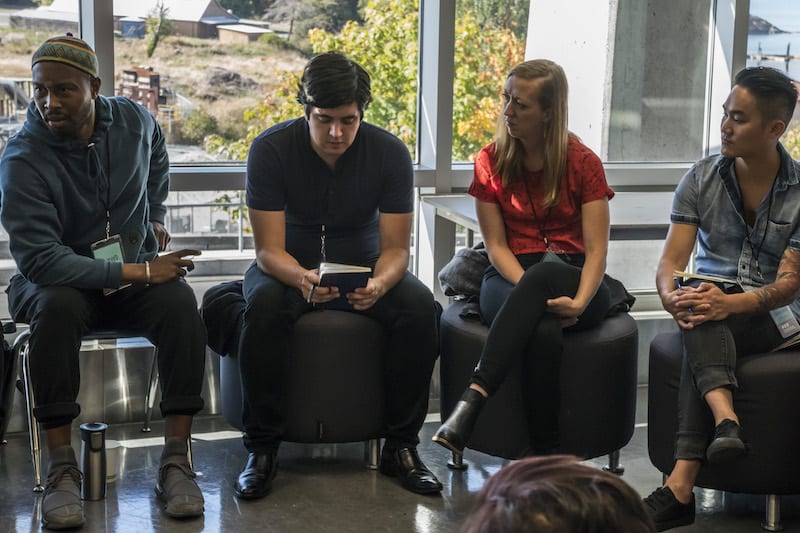
Photo: Kirk Schwartz.
Part 4 – Race, Silos and False Binaries
ZS: The issues related to the terms "black", "Indigenous", and "people of colour" was part of a conversation entitled "Redness: Blackness: Thinking". These silos can be destructive and create false binaries and hierarchies. What was your thinking about these silos and binaries, and while you wanted to explore them, how did you also hold space to challenge them?
CCK: You just asked a hugely complex question and there is no simple answer to it! I'll try something visually that might help to answer your question. If we look at Canada and when the Canadian art system was constructed and developed – here I am talking about the regional theatres and the regional galleries that exist across the country; the current National Gallery of Canada; the National Arts Centre; the various institutions of the art system – we are going back to the 60s and 70s. What you see there is a big circle and it is almost exclusively white and here and there are little dots of red or black or other colours that occasionally found their way into that system.
If you move forward 30 years to the 90's – let's say, – then you have a big white circle with not just dots but little circles within it. It is still primarily a white circle with these colours moving around it. If you look at the year 2017, what you have now is the white circle still at the centre but it is smaller and some of the circles of other colours are actually occupying more space, but everything, including Indigenous practices, is still outside the centre because whiteness is still the centre.
What France and I are trying to argue, and what our colleagues across the country are trying to argue, is that a different mapping needs to be in place. In the redrawn circle, the centre would be red. There would be Indigenous practices at the centre. These are the traditional and contemporary art practices of this land from the people who have been here for millennia. That's how any territory should be thought about and organized, as we do that for other parts of the world. The European traditions, if we represent them as white, they would be only one of the circles that would surround the Indigenous core and then there would be other circles of blackness or brownness or any other colours. This is a very simple, and, yes, it is a cliché but it does redraw the art circles of this country's history.
Whiteness is just one aspect of this country and especially so in artistic production and the minute you do that you reject all the binaries because then you can talk about redness, or Asian-ness or blackness, or brownness or Latin-ness. This relates directly to your question of "Indigenous", "black", and "people of colour". All of these terms, they are just containers and they come together, and they come apart. That is what has happened in this dialogue. In the particular discussion you are talking about – which was contentious, – that contentiousness was very productive. It really moved these conversations forward. People who are in the funding systems, in the institutions of this country, who are still insisting that real art is European, their position is not just under attack, it's rapidly becoming more and more difficult to hold. Because it doesn't really make sense in the context of the persons that currently live on this territory called Canada.
+++
France: Reflecting on the naming, the categorizing, what Zool called the silos in 2017 – how can funders reframe their arts policies and programs today in 2019?
Chris: Yikes! One could easily write a book on this topic. Arts policy in Canada is in urgent need of a reflective, non-racist, web-savvy, future oriented, consequential update.
An exercise that I often encourage is to imagine that we have no arts system. Imagine that we in the arts are baggage-free from Canada's colonial legacy. Artists in all disciplines, from all cultural backgrounds are producing their work, in 2019, just as they do. We are tasked with designing from scratch the whole arts milieu – funding, venues, arts infrastructure, rehearsal spaces, critical writing, archiving, and on and on. What would that look like in 2020?
It is provocative, yet enjoyable to imagine what that might look like. However, it is not so clear how these new policy futures can be put in place – that is exactly the challenge for Primary Colours/Couleurs primaires. One thing for sure, it will take political will.
+++

Photo: Kirk Schwartz.
Part 5 – Knowledge of the Land, Settlers and Sliding In
ZS: As you reflect back on the Gathering, if there was one thing that you could put your finger on that you think kind of worked, what would that be for you?
FT: First, people did not have to explain who they were. They did not have to educate the people around them. I think that's why discussions went where they went. It was such a comfort. At many of these events or conferences, Indigenous artists and artists of colour spend a lot of time explaining and educating. I think for me that was the most important aspect of these dialogues. And because we did not have to do that, it freed up space, time and energy to be able to push conversations forward and go into much more complex issues. The level of complexity of these exchanges is really mind blowing so that for me is what really stood out.
ZS: Chris what was one thing that stood out for you?
CCK: There were many things that stood out. The most important was the sense of spontaneity. It was not a conference; it was a Gathering. These are two different things and a Gathering is exactly that, you bring people together, and you have a bit of a frame around them but there are no experts, no panels. There was no one person talking to another group of people that are scribbling notes because they want to have the knowledge that the expert possesses. We would say about Primary Colours/Couleurs primaires that we do not have any experts because everybody who is coming is an expert.
FT: I think we were very deliberate in our intention to de-centre the Western understanding of knowledge, of expertise, of authority. The methodology that we developed over the past two years was very deliberately aimed differently, trying to 'Indigenize' the way that we understand our relationship to knowledge and how that knowledge is framed.
In the Western art world people own knowledge. This is a very awkward thing because from an Indigenous perspective, you don't own knowledge.
Knowledge is there and you may receive it, it may be shared, and you might even pass it on, but it's not your possession. So it is the whole relationship to knowledge and how it goes back to the land. In the West there is owning land and owning knowledge. We were trying to de-centre that relationship.
+++
Chris: I think that I understand this intellectually – knowledge not being owned but shared, perhaps in a community, a nation, a clan. But I am also hyper-aware that not all Indigenous knowledge is for sharing, that some cultural experiences are sacred and are protected from outsiders. What I do not understand is this distinction – is it a matter of protocols? Or bloodlines? Or kinship? To be clear, I am not upset about this – I am comfortable with not knowing things! Just curious, I guess…so can you sort some of this out for me?
France: What comes to mind, are the words of an elder, a few years ago on Treat 6 territory, explaining that not everything is for sharing, especially not at this moment in time, when the Indigenous peoples of this land are in the aftermath of a cultural genocide. In times like this, Indigenous people need to stand in close circles, shoulder to shoulder, to protect the ambers, to make sure that the fires can be strong again. Then the warmth and the light can be shared.
This being said, I think that in every culture there is wisdom that is shared carefully, through protocols, through ceremony; specific knowledge revealed to people ready to receive it, to carry it with respect and eventually to pass it on.
+++
CCK: To represent another part of this discourse, I think there is a special relationship to land that immigrants have. Here, I could even include people of European descent, although over the generations, most of them have kind of lost that relationship because they do not often know that much about the land from where their ancestors came.
No, I am talking about recent immigrants to Canada in, say, the last 50 years – first- and second-generation families of colour that have come here, about their idea of home being a kind of 'mythic space'. Home, as they left it, does not really even exist. You have second-generation folks that are born in Canada, and that have never gone back to 'their homeland', dressing in a certain way, eating certain kinds of food and relating to certain conceptual kinds of 'homeland'. For Indigenous people, homeland and land are the same thing – this is their land. It is their homeland, even if they are not on the exact territory of their traditional people. There are two aspects of land that immigrants face. One is the land left behind, the land of the "mythic space" and then there is the land that they step on the moment they arrive here which is Indigenous land. Some of them know that and understand that – but many of them do not. For them, they have arrived in Canada. But what is Canada and how do they understand Canada? This concept of "land" and "landed" at the same time, I think it plays out in a very different way for immigrants of colour than it does, obviously, for Indigenous people. But, perhaps, not so obviously, for people who are these days named as "settlers", which is also a problematic word.
ZS: The notion of "settler" has become a much more dominant term over the last two decades, it has been very much in ascendency. It is a term that is used in the academy as a necessary acknowledgement that if you are not an Indigenous person, that you are recognizing Indigenous peoples and recognizing that the territory of Canada has been stolen from them. But at the Gathering there was a significant push back against this term. There was the sense that for some people, in their histories, they did not have the choice to 'settle' as these people were brought here outside their own will, or the will of their ancestors. For other people, it was " I choose to come from a colonized space to another colonized space so I am actually a co-traveler with you in this opposition to colonizing so I don't want to be seen as part of a colonizing paradigm". In the work you do of course you ran into this term over and over again. How do you respond to the term when you were setting up the Gathering?
FT: An interesting thing is that in French, the word "settler" has no translation.
ZS: Colonist?
FT: The word is "colon" in French, and it means both colonist and settler. "Colon" takes you right back to colonization. There is a romantic idea of the "colon", of the colonizer and it is carried about throughout Canadian history. The sentiment of identifying as a "settler" is a way of showing that a romantic understanding does not really exist at all.
CCK: It's been a problem in my mind right from the beginning. When I first heard this term about 10 years ago, I wondered what was the point of using this word because we already had this term in French and English? That term is "colonist". We talk about the colonists, the people that came to colonize this land and they were committed to something close to genocide on Indigenous people. Certainly, they instituted a cultural genocide.
They came from primarily two European countries, but they came from other places in Europe as well. They were colonists. So when these words started appearing, and you are right they came from academia, this was and is a very complex conversation. For Indigenous people, there is an important binary – Indigenous/non-Indigenous. This binary exists because an Indigenous view is that "we've been here for millennia and all of you came afterwards". To identify as a settler is to acknowledge that one is on such and such Indigenous territory.
As France points out, people of African heritage, people like Sylvia Hamilton and Rinaldo Walcott, insisted, and correctly so in my opinion, on the specificity of black experience in the Americas. France was talking about the reality of always being racialized as being black and we see that especially played out in the United States but certainly also in Canada – that black people are still treated as second-class citizens. To say that black people came here as "settlers", it is almost comical to imagine the term in that way. So it's an inappropriate term to use and no wonder people are pushing back. If your ancestors are Chinese who came here to build the railway, they were more or less indentured. If they were Japanese, at one point they were interned. In some cases, if they were South Asians, they were turned away from Canada's shores. How can you say that any of these folks were "settlers"? From my perspective, I just don't see the word 'settler' disappearing. But I also don't think it's a useful word.
So I think if you want to stick to the Indigenous/non-Indigenous binary, then, you stick to it. But the problématique – and it is not an easily resolvable problem in Canada – is first you have Indigenous people. Then you have people who are non-Indigenous, who are in fact if not themselves "settlers", they come from the settler tradition, the settler history, the colonial history, Then, finally, you have other people, mostly of colour, who were not settlers but who are also non-Indigenous. So, is it a binary conversation or is it a three-way conversation?
+++
France: In this conversation about terminology used to describe people's relationship to the land – Indigenous, settler, colonist, immigrant, etc. – there seems to be a new term used – settler artist of colour. Yes, I realize that it is a contested term, but do you think that it nevertheless has the virtue of describing a position that is more historically/politically informed?
Chris: No, actually I do not. It conflates the issues. In an attempt to acknowledge that all non-indigenous people do need to position themselves in this settler narrative, some artists self-identify as "a settler PoC". And there is no question that all of us whose families of colour came here after contact have – in limited ways – benefited from the white, colonial privilege that has been used to ban and suppress the cultural/artistic practices of Indigenous peoples.
Further this description confusingly simplifies the complexities of all of us living on this territory called Canada. It re-creates binaries: Indigenous/non-Indigenous; original inhabitants/settlers; Indigeneity at centre/whiteness moving out of centre. In this semantic construction, non-Indigenous is commonly read as 'white.' And BPoC and their art practices are erased.
+++
FT: There are also a lot of newcomers to this land who just slide into the myth of "Canada", the easy understanding – not the complex understanding of this country – without really knowing about Indigenous history. And to just be here in Canada, as an immigrant of colour – for whatever reasons and I am not trying to target anybody – and then to buy in to 'settler privilege' is also problematic. I just think that it is not so easy to understand as people are complex – you cannot take people apart like that, because they embody many of their own contradictions.
CCK: Yes, if an immigrant of colour comes to this country who may have no understanding of Indigenous history and have no interest to know about that history, they are nevertheless racialized into a separate category and I know this for my own experience and the experience of many of my friends and colleagues. You can never really pass as a 'real Canadian'. You are marked by your skin, by the way you look, by the languages that you speak, by the religion that you practice. Canada is a hugely Islamophobic country as all three of us know, so you can't just slide in, as much as you might WANT to just slide in.
Part 6 – The Challenge of Decolonizing Institutions
ZS: How do you see carrying the learnings in Primary Colours forward to challenge the paradigms?
FT: One of the objectives of this project is to disseminate some of the findings so that the conversation then interrogates the unresolved questions. By bringing those questions into a larger discursive space, we will put in place a number of initiatives to be able to achieve that.
I want to tell you a little story of something that happened about a year ago. I was sitting in an office in Ottawa, an office of Canadian Heritage with senior policy advisors. And I was talking about Primary Colours/Couleurs primaires. I was talking to them because we wanted them to be partners, because we felt that they had a huge stake in this. One of the senior advisors was really playing the bureaucrat role and asking me all these questions about accountability and about measuring results and deliverables.
So after an hour-long conversation, he asks, "So, how are you going to measure the success of your initiative?" And I said, "Well, I think the best way we can measure it, is going to be in the ability of Canadian Heritage to change your programs and your policies. That is going to be your real measure of success." And so, that's where we are coming from.
How we're going to do this, I think, is by continuing the conversation with the funders, with the people that are responsible for arts policy, and multiplying the opportunities for these conversations to happen. And we know the challenges of changing policy, when both Chris and I were young, you know, we wanted things to change fast and you realize that these things do not happen like that – actually that they happen over time.
+++
Chris: Your 'little story' is symptomatic of how institutions reinforce their power by insisting on their frames and protocols; their understanding of arts communities that are developed internally; their policies that are then ratified by higher-level bureaucrats. But I also sense that you identify other factors that may be more pernicious. You mentioned that you felt there is backlash to the attention being paid to Indigenous artists. How so?
France: What I am witnessing is a certain pushback on Indigenous presence in arts institutions. It's like, "We've done reconciliation, so now we are back to doing business as usual, to presenting 'real art". Yes, I have heard that!
There is also the fact that when Indigenous artists, directors and curators work with/inside mainstream arts institutions, they often challenge the assumptions, the conceptual frameworks and the methods. And that can generate misunderstanding and discomfort for the organization. Initially full of good intention to 'include' Indigenous artists, many arts organizations soon realize that they are not willing, able or equipped to respond adequately to Indigenous presence. So it is easier to shift the focus, the curatorial intention.
+++
CCK: I think that the question of how institutions are going to change, how the art system is going to change is extremely complex. And actually, at the Primary Colours Gathering we had two conversations. One was the historical conversation about artistic practice in arts institutions with two sorts of veterans of that, Tom Hill and Aruna Srivastava – people who have been fighting these arguments within institutions for a long, long time. Decade-long struggles. And then we had another more contemporary conversation, entitled "Indigenization of Institutions, Really?", in English and then a concomitant one in French.
Can institutions actually change? That's the epistemological question. Or do institutions just simply co-opt and co-opt and change their shape, but in the end, they're just referencing the same way of being. Institutions, after all, come from colonial histories, they're constructed in colonial ways. They're about relationships of power. So, how do institutions change? They change depending on what is the moment in history. They do not change in one way, according to a recipe. It's not about a revolutionary change; rather it is all these small, granular changes that happen. And in the end, the power still lies in institutions. So, we can get as many people of colour, as many Indigenous people in there as we think is appropriate. We can try and change programs and policies, but we are still going to be struggling with the concept of the institution.
One of the things that we didn't touch on enough at the Gathering was this: Would artists organize differently if they could? Are these the governance structures that artist should use: non-profit societies relating to funding institutions, hiring curators and artistic directors and burdened with boards of directors? Is this the right way for Canadian society, to "foster and promote…the production of works in the arts" as described in the mandate of the Canada Council? We want to think about how we want to organize ourselves so that our artistic practices are supported? It is complex, there really is no easy answer to that.
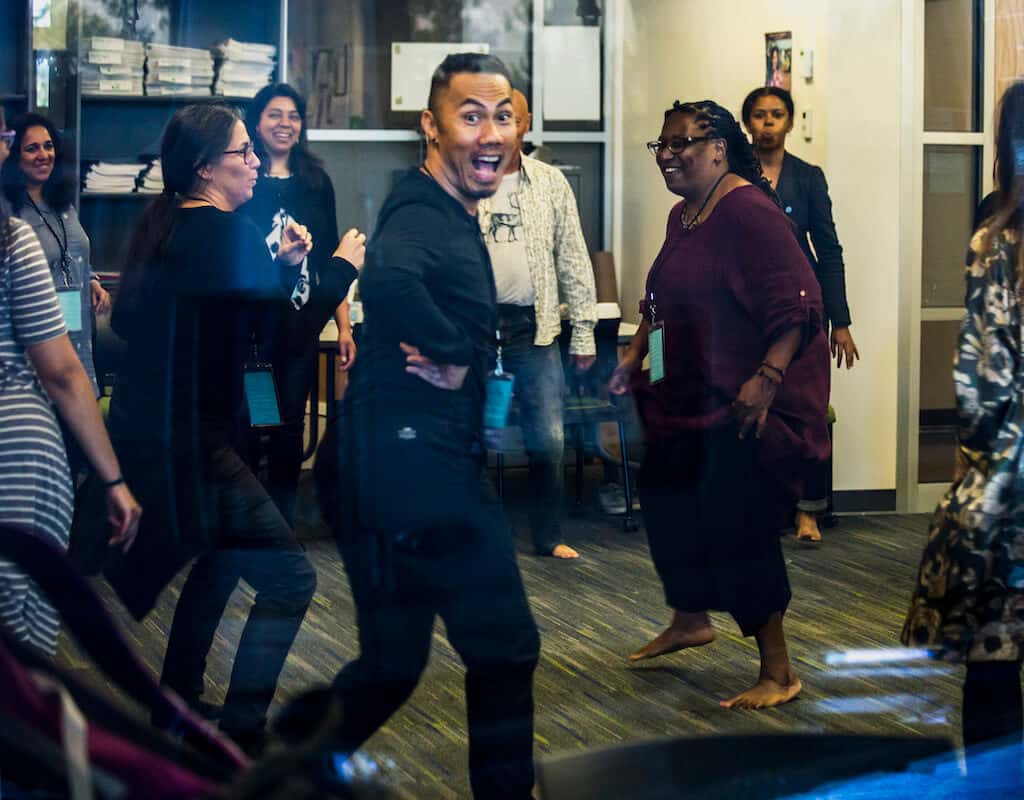
Photo: Kirk Schwartz.
Part 7 – The Centrality of Artistic Practice
ZS: I want to thank both of you for your generosity in taking the time to speak to me today about Primary Colours/Couleurs primaires. I want to leave with one last question, which is, what's the one thing I should have asked you that I did not? What question did I miss that you think was crucial?
FT: That's a good question.
ZS: We covered a huge amount of territory, but I'm wondering if there is something you feel that really needs to be highlighted and here is a moment to do that.
FT: Well, maybe we could have touched upon one of the segments which was about artistic practice. I know that our conversations were about artistic practice and how we embody them and how we enact them. But I think, one important aspect of what we try to do, and a bit foolishly, because, you know, there is just the two of us! But we really wanted to create moments where people could show their work. So the Moving Images Showcase was important, I think. And it was important for the artists that showed their work and it was important for the audience that received this work. The Deconstructing Comfort exhibition, was also a way of connecting with local communities. Because the Gathering was by invitation, we felt it was so important to create entry points into meeting artists, into engaging in conversation with local people. So, maybe a question could have been around the artists public programs.
CCK: Don't forget the Cabaret!
FT: And the Cabaret which was amazing! People had been talking to each other for four days and getting to know each other more from a different place than the artistic practice. And to see people stand up on the stage and perform was mind boggling for a lot of people. It's like, "Whoa. I never realized you do this." And so, that, I think, that aspect of bringing practice into the conversation was another way of making it a very holistic, a very round experience. It was not just an intellectual conversation. That was one of our pre-occupations, that people felt full when they left, from every aspect…physically, intellectually, emotionally and spiritually. And so, showing work, sharing art practice was that aspect
CCK: The idea that art exists in some kind of enclosed frame, which is very much the Western way of understanding art, and you talk about form and colour palettes and lighting effects and movement. And you understand artistic practice for itself, so to speak – the idea that art has no sociology, no politics, no history is a complete and total myth. But the fact of the matter is that if you bring Indigenous artists together, black artists together, artist of colour together, that sociology, that history, that politic, that colonial history, they imbue all conversations about artistic practice. And so, it's very difficult to say, "Oh, no. Let's just keep talking about art" because their own work is about art AND it is about all of that other stuff, as well. I think the mainstream doesn't really understand that, the European tradition doesn't understand that. It's always, "Why does your work have to be so political? To answer this question, if you show your ethnicity, aren't you just fetishizing your own racial and cultural history?" As if white people don't fetishize their history! So, I think it's important to keep, not just talking about art, but talking about how art relates to all of the above. And especially, how it relates to 500 plus years of colonial history.
+++
France: Looking back at your statement about the connection between art and its socio-political environment, I am reminded of how young and emerging IBPoC artists – Millennials, one could say – have a much more intersectional understanding of art practice. Do you see this as a hopeful way to imagine the future?
Chris: I absolutely do agree with you. It is not just hopeful, but necessary. 'Intersectionality' in the arts is the future. Many younger IBPoC artists are working in this way. It is sometimes forgotten (or never known in the first place, because of our ahistorical era!) that the trail has been blazed by senior artists, someone like Alanis Obomsawin comes to mind. IBPoC pioneers insisting on foregrounding race; brave queer artists proudly proclaiming ; artists in other parts of the world declaring that their 'ethnic folk' practices are, in fact, art; feminists artists asserting the presence of women in the art world – all of those complex histories have come to bear on this moment.
And certainly it is true that many young IBPoC artists get this profoundly. They not only provide me with hope for the future, but inspiration. The relevance of their work provides renewal and resilience to art practice. Their art awaits us; it ignites us; it keeps us alive.
+++
And thank you, Zool, for taking your time to do this interview.
+++
We would like to thank Zool Suleman, for giving us this opportunity to take a 2019 look at what we said previously in 2017 regarding Primary Colours/Couleurs primaires.
+++




